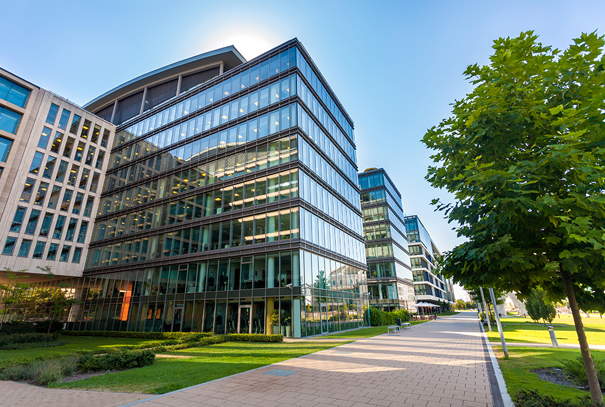
The importance of health, safety and good communication in the workplace has always been critical, but perhaps never more so than in current times, with the threat of COVID-19 still looming. Here are some key considerations for actions you should look to undertake prior to re-opening (this is not an exhaustive list and it is recommended that you also check your policies for any specific requirements):
- Conduct a thorough internal & external visual inspection – Whether or not you have been able to visit your building for routine inspections during the lockdown, it is recommended you undertake a full internal and external walk-around inspection of your building. Externally, look out for signs of damage, discarded rubbish or blocked drains. Internally, these checks should be undertaken in accordance with your routine periodical fire safety inspections, ensuring that fire doors are fully functional, exit routes are kept clear and that exit doors are fully operational. Special attention should also be paid for signs of water ingress from the roof and external walls.
- Take special care when re-activating water/heating/electrical systems – Firstly, if you have spotted any signs of water ingress during a visual inspection, it is likely a qualified electrician will be required to confirm when it is subsequently safe to restore power. Secondly, please be aware that government testing and inspection protocols have remained in place and in force during lockdown. If any pieces of equipment or electrical systems are due for inspection, please ensure these are booked as soon as practically possible and that you comply with all relevant legislation. Thirdly, it is good practice to restore power to individual equipment and circuits in sections rather than all at once. Finally, visual checks should be undertaken to all systems after powering up for any abnormal signs or conditions.
- Prepare the building for tenants – First and foremost, a thorough deep clean of the building should be undertaken if it has not been done already. Social distancing is likely to be a government guideline for some time to come, and therefore needs to be taken into consideration when assessing numbers of personnel in a building and how to handle communal areas. Social distancing signage is recommended, along with appropriate protection for reception staff, such as protective screens and a plentiful supply of Personal Protective Equipment (PPE).
- Minimise physical contact points – Another key to reducing the risk of future spreads of COVID-19, and to instil tenant confidence, is to minimise physical contact points. Whilst it may have other implications, consideration must be taken as to the viability of touch-free automation of all doors, and/or hand sanitiser being provided at any unavoidable points of contact.
- Communicate your actions and plans with tenants – Communication has arguably never been more important, as tenants look for certainty that cleanliness and safety is the number one priority. Signage again is one simple way to outline what actions are being undertaken, but ideally email and/or text would also be used to directly reach individuals and highlight the importance being given to your actions.
What does this mean for my property insurance?
Whilst communication is crucial in order to re-gain and maintain tenants’ trust, it is also vital in respect of your insurance programme. As with our previous guidance relating to unoccupied buildings, our key piece of advice is to inform your broker and insurer of your intentions to re-open. We can then look to assist with any engineering/electrical inspection requirements that you may have, and to ensure that these are undertaken prior to your building reopening, to avoid statutory breaches of health and safety. Furthermore, in partnership with you insurers, we can look to provide bespoke checklists and guidance for your individual properties about the way in which to safely re-open those individual assets. Where applicable, risk management bursaries may even be deployable in order to assist with certain key tasks – and insurers can review and approve any adaptations to security protocols, such as contactless entry and exit points, to ensure your policy coverage remains unaffected.


